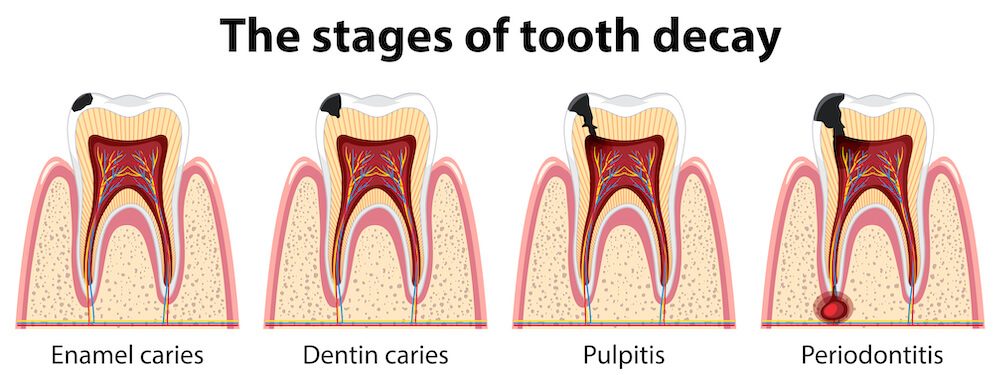Ask the Dentist: What Happens When You Need a Dental Filling?

Dental fillings are one of the most common restorative dental treatments used to repair cavities and minor tooth damage. If left untreated, cavities can progress into serious oral health issues, such as dental pain, infections or even tooth loss.
Understanding the process of getting a dental filling can help patients feel more at ease when visiting the dentist.
In this article, we will explore the reasons for dental fillings, the types of dental fillings available, what happens during a dental filling appointment, and post-treatment care.
Why Do You Need a Dental Filling?
A dental filling is necessary when a tooth has been compromised by tooth decay, wear and tear, an old filling that’s broken or minor fractures.
Here are some key reasons why a filling may be required:
- Cavities (Tooth Decay): Plaque buildup from food particles and bacteria produces acid that erodes and eats into the tooth, leading to cavities. It is important to understand that you may not always notice a cavity on your tooth – sometimes it can be sensitive or sore, but often the tooth decay may be silently eating away at your tooth like termites eating the wooden frames behind the walls.
- Tooth Wear: Grinding, clenching, brushing too hard or acidic foods can wear down the tooth enamel, creating the need for fillings.
- Fractures or Chips: Minor tooth fractures from trauma or accidents can be repaired with fillings to restore function and appearance.
- Broken Old Fillings: Sometimes you have an old filling that’s fallen off or broken and need replacing. Generally fillings are expected to last about 7 years.
What happens if I don’t get the dental filling done?
Failing to treat these conditions promptly can lead to more severe problems, including pain, infection in the gums or nerve, root canal treatment or dental extractions (tooth loss) which may in the long run end up creating more costs and problems.

Types of Dental Fillings
There are several types of dental fillings, each with its own advantages and disadvantages:
Composite Resin Fillings
- Made of tooth-colored material for a natural appearance
- Suitable for front and back teeth
- Less durable than metal fillings and may require replacement over time
Amalgam Fillings
- Made from a mixture of metals, including silver, mercury, tin, and copper
- Highly durable and long-lasting
- Larger metal fillings can cause teeth to crack and break
- More noticeable due to their silver color
Ceramic Fillings
- Very durable and long lasting
- Made of porcelain material
- More stain-resistant than composite fillings
- More expensive but highly aesthetic
Gold Fillings
- Custom-made in a dental laboratory
- Extremely durable and long-lasting
- More costly than other options

What happens at a Dental Filling Appointment?
The process of getting a dental filling is straightforward and typically completed in a single visit.
Here’s what to expect:
Step 1: Diagnosis and Examination
Your dentist will begin by examining the affected tooth using:
- A dental probe to detect soft or sensitive spots indicating decay or a chip
- X-rays are used to assess the extent of the decay and determine the best treatment plan. If the decay is deep and close to the nerve, then you may be at risk of an infection. The x-ray can help indicate whether there is already an infection underneath the tooth structure and bones. Sometimes the outside of the tooth looks okay but the decay is hiding underneath the surface of the tooth like a giant sinkhole. If the cavity is too deep or the nerve is already infected, then you may need root canal treatment or extraction of the tooth.
Step 2: Numbing the Area
A local anesthetic is administered to numb the surrounding gum tissue and the affected tooth, ensuring a pain-free procedure. While you feel a pinch in the first few seconds, once the gums and tooth are numb, you won’t feel anything. Please inform your dentist if you are aware of any allergies to anesthetic.
Step 3: Removing Decay
The decayed portion of the tooth is full of bacteria that damage the tooth structure. The dentist will use a dental drill or laser to carefully remove the decayed portion of the tooth, leaving only healthy tissue.
Step 4: Cleaning and Preparing the Tooth
Once the tooth decay is removed, the dentist cleans the cavity with special dental materials to eliminate any remaining bacteria and debris.
Step 5: Placing the Filling
- The chosen filling material is placed into the cavity in layers for better adhesion and strength.
- If a composite resin is used, a special curing light activates and hardens each layer.
- For amalgam or gold fillings, the material is shaped to fit the natural contour of the tooth.
Step 6: Shaping and Polishing
After the filling is placed, the dentist shapes and polishes it to ensure a comfortable bite and smooth surface.

What to Expect After a Dental Filling
After the procedure, patients may experience mild discomfort or sensitivity to hot and cold foods, which typically subsides within a few days.
Some aftercare tips include:
- Avoid eating hard or sticky foods for the first 24 hours
- Use a soft-bristled toothbrush to maintain oral hygiene without irritating the filled tooth.
- Schedule regular comprehensive dental check-ups to ensure the filling remains intact and detect any potential issues early.
Potential Risks and Complications
While dental fillings are safe and effective, some potential issues include:
- Tooth Sensitivity: Temporary sensitivity to hot, cold, or pressure is common.
- Filling Wear or Damage: Over time, fillings can crack or wear out, requiring replacement. This can be worsened or happen quickly if you have any clenching and grinding habits
- Allergic Reactions: Rare cases of allergic reactions to metal fillings have been reported.
Conclusion
Dental fillings are a vital part of restorative dentistry, preventing further decay and preserving the integrity of natural teeth. The purpose of dental fillings isn’t to inflict pain and discomfort, it is to help you protect your teeth from bigger problems and help you extend the life of your teeth.
Understanding the procedure and aftercare can help patients feel more comfortable about getting a dental filling when needed. The best way is prevention so please remember that regular dental check-ups and good oral hygiene practices can ensure the longevity of fillings and overall dental health.
References
- American Dental Association. (2023). “Dental Fillings: What to Expect.” Retrieved from www.ada.org
- National Institute of Dental and Craniofacial Research. (2022). “Tooth Decay and Fillings.” Retrieved from www.nidcr.nih.gov
- Mayo Clinic. (2023). “Cavities and Dental Fillings: Treatment and Prevention.” Retrieved from www.mayoclinic.org
